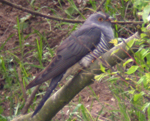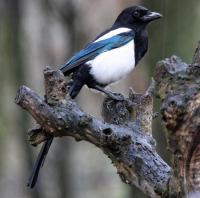- Home
- FAQs
- Customer Video Gallery
- Customer Photo Gallery
- Bird Facts
- Bird Food Blog
- Bird Information
- Feeding Advice
- Small Animal Information
- A to Z of Guinea Pigs
- A to Z of Hamsters
- A to Z of Rabbits
- Basic Care for Guinea Pigs
- Basic Care for Hamsters
- Basic Care for Rabbits
- Basic care for Chinchillas
- Basic care for Ferrets
- Basic care for Gerbils
- Basic care for Mice
- Basic care for Rats
- Buying a Healthy Small Animal
- Does your Reptile need a Licence
- Equipment for Ferrets
- Equipment for Hamsters
- Equipment for Mice
- Equipment for your Chinchilla
- Equipment for your Gerbil
- Equipment for your Guinea Pig
- Equipment for your Rabbit
- Keeping a House Rabbit
- Dog Information
- Cat Information
- Customer Information
- Fat Balls
- Suet Pellets
- Straights
- Seed Mixes
- Suet Treats
- Mealworms
- Bird Feeders
- My Account

| Scientific Name | Cuculus canorus |
| Breeding | late May |
| Fledge Days | 17-21 |
| Incubation Days | 11-13 |
| Lifespan | 5 |
| Number of Clutches | 1-25 |
| Number of Eggs | 1-25 |
| Size | 32-36cm |
| Weight | 110-130g |
| Wingspan | 54-60cm |
Bird Family : Cuckoos
Cuckoo Facts - Information About Cuckoo
(Common) Cuckoo - Cuculus Canorus
Many people think the Cuckoo is a small bird, however, in reality, it is over a foot long and in flight can look very falcon like.
It is perhaps better known for its typical ‘cuckoo’ call and for its parasitic behaviour. The cuckoo is a summer migrant.
Identification:
Adult
- Without doubt the UKs most easily recognised calls.
- Adult males and females are alike.
- Cuckoo’s are as large as our doves, however the tail makes up a lot of that length.
- It could be likened to a small grey Magpie as the general shape is the same.
Males
- Tail is long, rounded, dark at the tip merging into pale grey - this grey colouration continues to cover the entire upperparts including the head and upper breast.
- Wings are also grey but the primaries are darker.
- The grey head has a yellow eye and small dark bill.
- The underparts are white with dark barring, heaviest on the lower breast, this thins out the belly and is almost lacking on the undertail coverts.
- Under side of the tail show some white barring.
- Legs are very short and yellow.
Females
Come in two colour phases:
- Grey (common) very similar to adult males but shows a rusty tinged chest.
- Brown (rare) this is also called hepatic, which is totally rusty brown above, streaked dark and whitish below, again with dark streaking.
Juvenile
- Juveniles appear from May onwards and are look lake grey/brown adults.
- Adult females lay their eggs in host nests and let other species of birds bring up the youngsters.
- Common host parents are Reed Warbler and Meadow pipits, the female cuckoo may visit an astonishing 40-50 nest in one summer.
Status and Distribution
The Cuckoo is a common breeding migrant in the UK with over 15000 pairs. The Cuckoo occurs in all counties throughout the UK and Ireland
Birds start to arrive in April and head south to winter in Africa in September/October.
Habitat/Food
Cuckoos occur in all habitat types throughout the UK, woodlands, parks, gardens, farmland, Marsh’s, reedbeds indeed any open country habitat with suitable scrub.
Cuckoos are insect eaters and are partial to caterpillars and beetles.
Song/Call
Call / song note; Cuckoos have one of the most well known of all bird sounds, it gives a far carrying ‘coo coo’ sounding like its name.
The following food is favoured by Cuckoo











